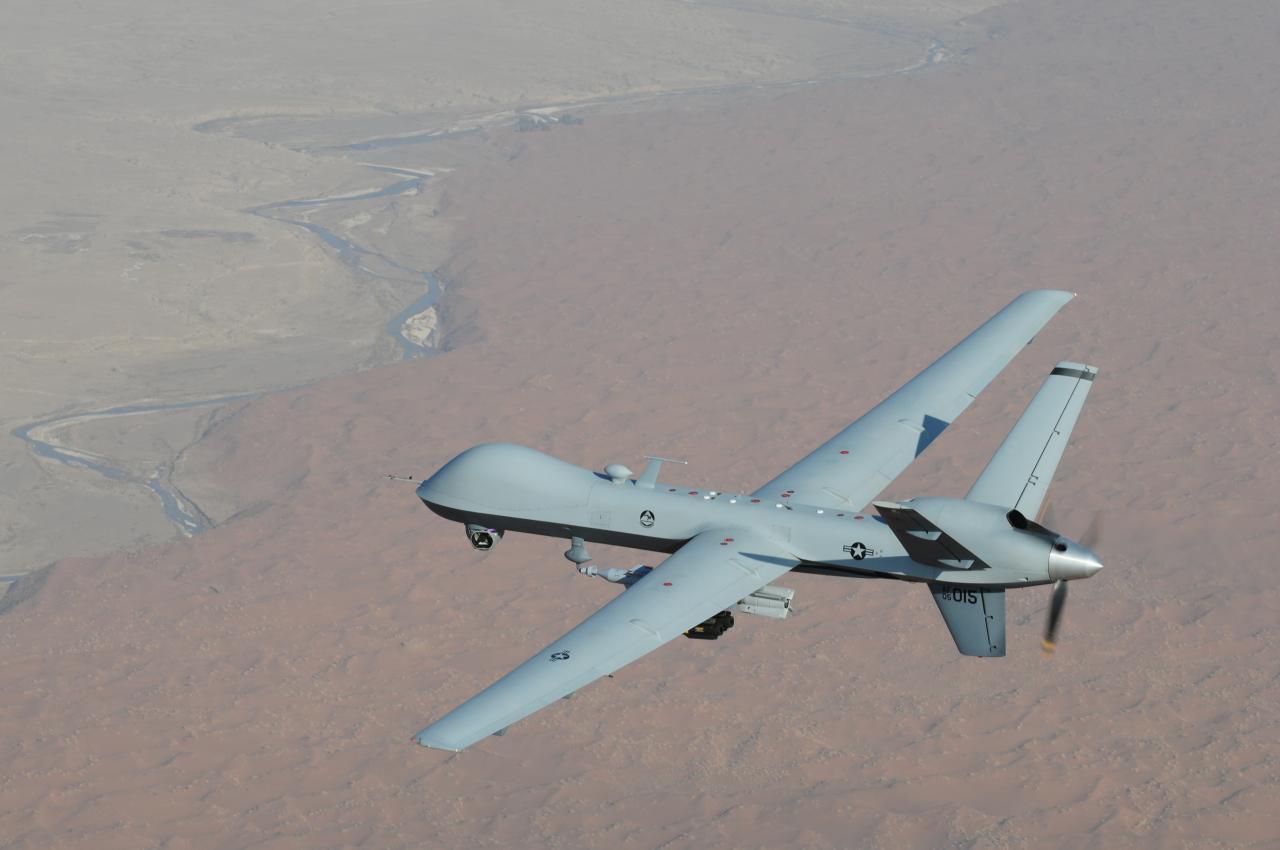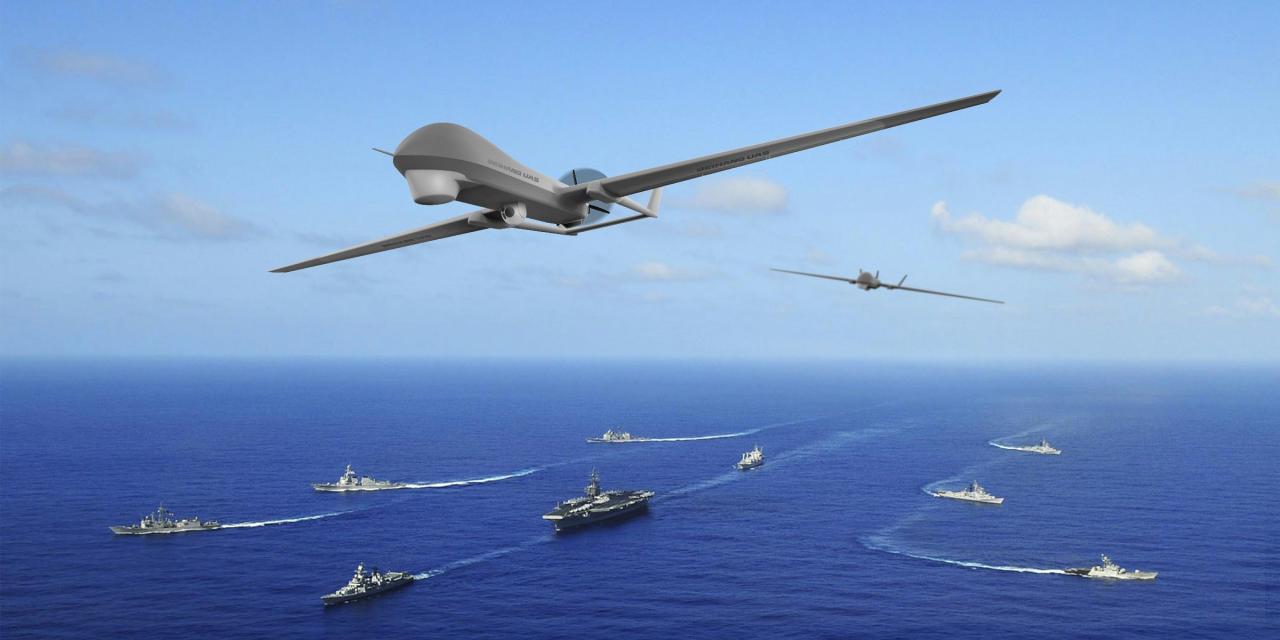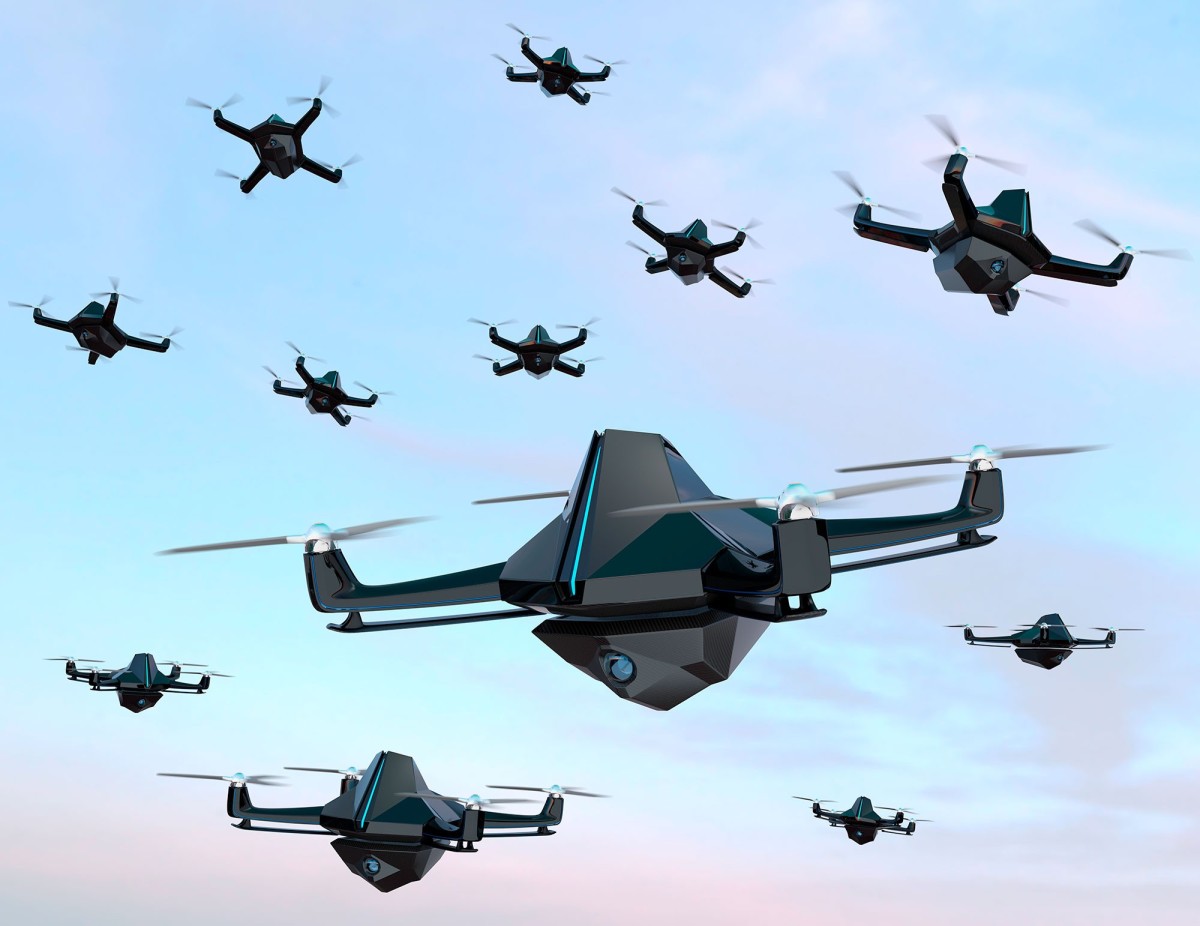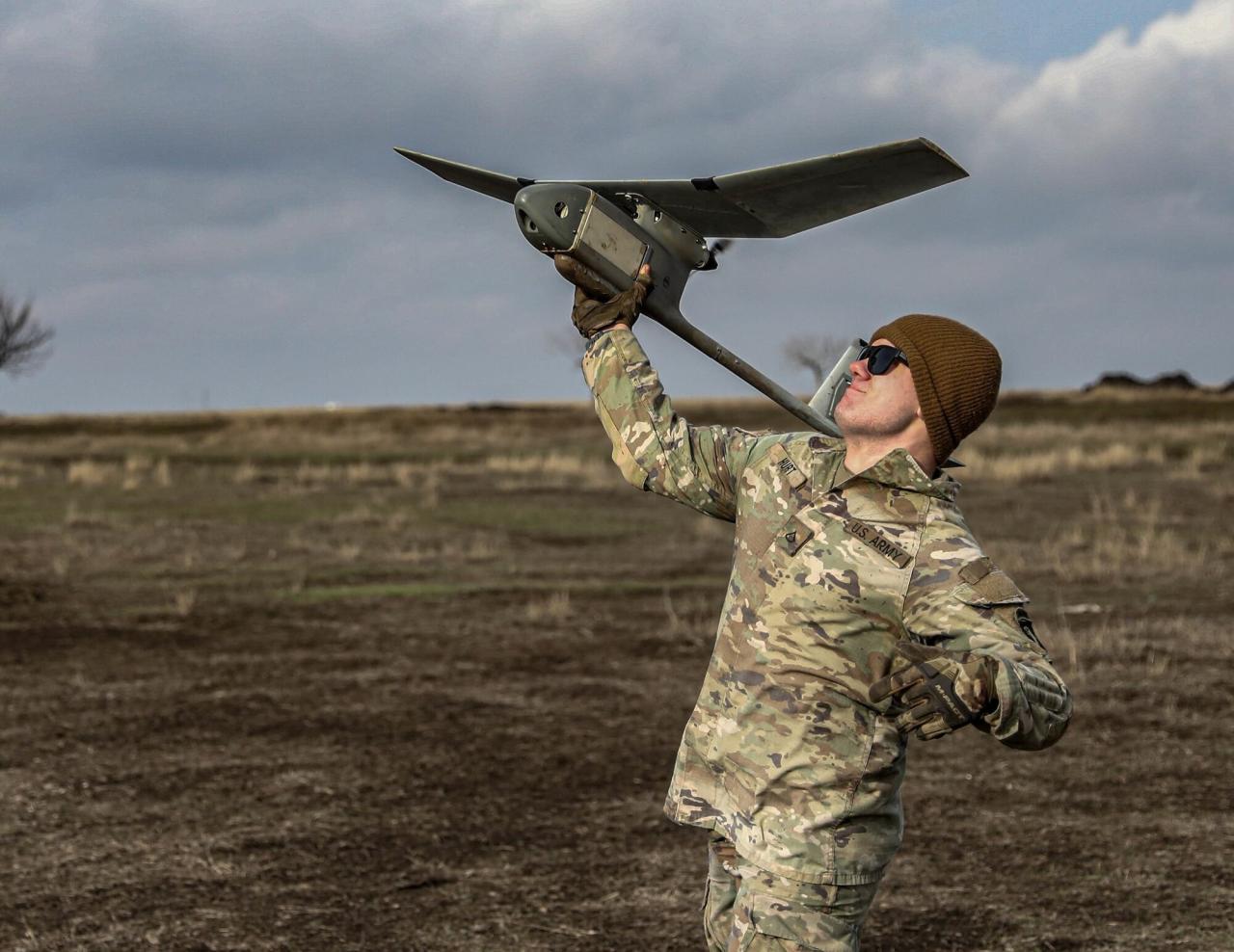Predator drones have revolutionized modern warfare and are increasingly finding applications in civilian sectors. From their initial development as surveillance platforms, these unmanned aerial vehicles (UAVs) have evolved into sophisticated weapons systems capable of carrying out complex missions. This exploration delves into the technological advancements, military and civilian uses, international implications, and ethical considerations surrounding these powerful machines.
We’ll examine the evolution of Predator drone technology, tracing its progress from relatively basic surveillance tools to the highly advanced systems deployed today. We’ll also analyze the strategic and tactical uses of these drones in various conflicts, exploring both their successes and the ethical dilemmas they present. Finally, we’ll look at the potential for civilian applications and the broader societal impact of this transformative technology.
Predator Drone Technology: A Deep Dive

Predator drones have revolutionized modern warfare and are increasingly finding applications in civilian sectors. This article explores the technological advancements, military and civilian applications, geopolitical implications, and ethical considerations surrounding this powerful technology.
Technological Aspects of Predator Drones

The evolution of Predator drones showcases remarkable technological progress. From its initial iterations as a relatively simple surveillance platform, the technology has advanced significantly, incorporating sophisticated sensors, communication systems, and propulsion systems. Key advancements include improved payload capacity, extended range, and enhanced endurance.
A Predator drone’s core components include advanced sensors such as electro-optical/infrared (EO/IR) cameras and synthetic aperture radar (SAR), providing real-time imagery and data. Secure communication systems enable reliable data transmission over long distances, often employing satellite links. Propulsion typically involves efficient turboprop engines, enabling sustained flight for extended durations. Different models, such as the MQ-1 Predator and MQ-9 Reaper, offer varying capabilities, with the Reaper boasting a significantly larger payload and greater range.
However, Predator drones are not without limitations. Challenges include vulnerability to electronic warfare, susceptibility to adverse weather conditions, and the logistical complexities of operation and maintenance. Dependence on satellite communication can also be a constraint in areas with limited or disrupted satellite coverage.
| Predator Generation | Payload (lbs) | Range (nm) | Endurance (hrs) |
|---|---|---|---|
| MQ-1 Predator (1st Gen) | ~500 | ~1200 | ~40 |
| MQ-9 Reaper (2nd Gen) | ~3000 | ~1850 | ~27 |
| MQ-9B SkyGuardian (3rd Gen) | ~4000+ | ~2000+ | >30 |
Military Applications and Strategies
Predator drones have fundamentally altered modern warfare strategies. Their primary tactical applications include surveillance, reconnaissance, and targeted strikes. They are employed in various conflicts, offering persistent intelligence gathering and the ability to engage targets with minimal risk to human pilots. The use of Predator drones enables real-time assessment of battlefield situations and precise targeting capabilities, minimizing collateral damage.
Successful deployments include their use in counterterrorism operations in Afghanistan and Pakistan, providing crucial intelligence and carrying out targeted strikes against high-value targets. However, ethical concerns surrounding civilian casualties and the potential for unintended consequences remain significant. The use of Predator drones raises complex legal and moral questions about the rules of engagement and the accountability for actions taken remotely.
Hypothetical Military Operation: A combined arms operation involving Predator drones could proceed in phases:
- Phase 1: Intelligence Gathering: Predators conduct persistent surveillance, identifying enemy positions and movements.
- Phase 2: Target Acquisition: High-resolution imagery and data are analyzed, confirming target locations and minimizing civilian casualties.
- Phase 3: Coordinated Strike: Predator drones, supported by ground forces and air assets, execute precision strikes against identified targets.
- Phase 4: Post-Strike Assessment: Predators provide real-time assessment of the strike’s effectiveness and potential for follow-up operations.
Civilian Applications and Implications

Beyond military applications, Predator drone technology holds significant potential for civilian use. Its capabilities can be leveraged for search and rescue operations, environmental monitoring (e.g., tracking wildfires, assessing environmental damage), and infrastructure inspection (e.g., inspecting bridges, power lines).
Predator drones, those high-tech surveillance aircraft, rely on strong, reliable communication links. To ensure your own device is using the optimal frequency, you might need to check your wifi settings; learn how by checking out this guide on how to check your wifi ghz on iphone. A strong wifi signal is key for many applications, even if you aren’t piloting a predator drone yourself!
However, integrating drones into civilian airspace presents regulatory and safety challenges. Establishing clear airspace regulations, ensuring drone safety and security, and addressing privacy concerns are crucial steps for responsible civilian drone adoption. The ethical considerations differ from military use; while military use prioritizes national security, civilian use prioritizes public safety and privacy.
| Civilian Application | Benefits | Risks |
|---|---|---|
| Search and Rescue | Rapid response, access to difficult terrain | Technical malfunctions, privacy concerns |
| Environmental Monitoring | Cost-effective, wide-area coverage | Data accuracy, weather limitations |
| Infrastructure Inspection | Reduced risk to human inspectors, detailed inspections | Maintenance, regulatory compliance |
International Relations and Geopolitics
Predator drone technology has significantly impacted international relations and power dynamics. Its use in counterterrorism operations has raised concerns about sovereignty and the potential for escalation. The proliferation of this technology to other nations introduces additional geopolitical complexities, including the risk of misuse and unintended consequences. International legal frameworks are struggling to keep pace with the rapid advancements and diverse applications of this technology.
Different nations hold varying perspectives on Predator drone technology. Some embrace it as a valuable tool for national security, while others express concerns about its ethical implications and potential for destabilizing regional conflicts.
- The United States: A leading developer and user of Predator drones, emphasizing their role in counterterrorism and national security.
- Israel: A significant developer and user, employing drones extensively in military operations.
- China: Rapidly developing its own drone capabilities, aiming for technological self-reliance and military modernization.
- European Union: Adopting a more cautious approach, emphasizing the need for international regulations and ethical guidelines.
Ethical and Societal Impacts, Predator drone

The use of lethal autonomous weapons systems (LAWS) embedded in Predator drones raises profound ethical dilemmas. The potential for civilian casualties and the lack of human oversight in decision-making processes are major concerns. The arguments for and against targeted killings using Predator drones center on the balance between national security needs and the protection of civilian life. The transparency of such operations and the accountability mechanisms for potential errors are vital for public trust.
Examples of civilian casualties resulting from Predator drone strikes have fueled controversies and debates about the effectiveness and proportionality of such operations. Public perception of warfare and national security has been significantly shaped by the increased visibility and use of drones in military conflicts.
Predator drones, those infamous unmanned aerial vehicles, are constantly evolving. To stay up-to-date on the latest advancements and controversies surrounding this technology, check out the drone news today for a comprehensive overview. Understanding current events helps us better grasp the implications of predator drone technology and its impact on global affairs.
Visual Representation: A circular diagram could illustrate the key ethical considerations. The center circle would represent the drone strike itself. Surrounding concentric circles would depict the ethical concerns, such as civilian casualties, lack of accountability, potential for escalation, and the erosion of international norms.
Closing Notes
The Predator drone, a symbol of 21st-century technological advancement, presents a complex tapestry of military might, civilian potential, and ethical quandaries. Its impact on warfare, international relations, and societal norms is undeniable. As technology continues to advance, understanding the multifaceted nature of Predator drones – their capabilities, limitations, and implications – becomes increasingly crucial for informed discussion and responsible policy-making.
Commonly Asked Questions: Predator Drone
What is the range of a Predator drone?
The range varies significantly depending on the specific model and payload. Generally, it’s measured in hundreds of kilometers.
How are Predator drones controlled?
Predator drones, those infamous unmanned aerial vehicles, are constantly evolving. To stay up-to-date on the latest advancements and controversies surrounding this technology, check out the drone news today for a comprehensive overview. Understanding current events helps us better grasp the implications of predator drone usage and future developments in this field.
They are remotely piloted from ground control stations via satellite communication links.
What types of sensors do Predator drones use?
Common sensors include electro-optical/infrared (EO/IR) cameras, synthetic aperture radar (SAR), and signals intelligence (SIGINT) systems.
What are the maintenance requirements for Predator drones?
Regular maintenance is crucial, including inspections, repairs, and component replacements, varying based on flight hours and operational conditions.
